Moving around the corner, interstate or internationally is as exciting as it is anxious. You have to get everything ready to move to a different environment and/or to find your bearings in a new city/country. Did you know that pets feel (your) emotions such as excitement and anxiety? For these reasons, moving with pets must be arranged in advance to ensure your loved animals a seamless transition. Just like you do for you and your family. After all, they are part of your family.
As we know, you adore your animals and we are sure you want the best for them, we listed some of the main tips for moving with pets.
How do I Know if my Cat or Dog is Anxious?
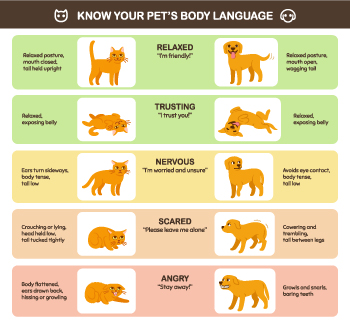
Know your pet’s body language
Before going into more details on our tips for moving with pets. It is essential for you to be able to recognise the signs of stress/anxiety a pet can express. Below is a non-exhaustive list of the main stress signs recognised in dogs and cats:
- For a dog: dogs anxiety can result in escaping although it is not their usual attitude. Excessive barking for things that do not bother your dog usually. But also, damaging furniture despite the fact it is not a puppy anymore. Finally, a loss of appetite.
- For a cat: cats’ stress can also result in loss of appetite. In addition, cats may urinate in your home while they don’t do it usually.
Noticing these signs is an advantage in responding to the anxiety of your cat or dog before, during and after your move. If you find your pet different than usual and you have any doubt, contact your vet for advice. Now, let’s jump in more details on our tips for moving with pets.
What to do Before Your Move?
How can I make my pets move easier?
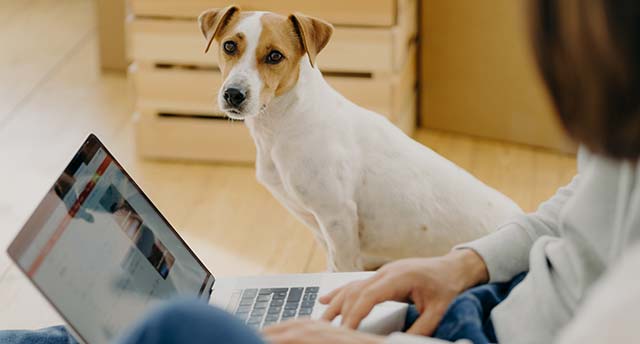
Contact a pet relocation specialist
Whether you are moving interstate or internationally, it might be good to contact a pet relocation specialist in advance of your move. Moving pets is not something you arrange at the last minute. Indeed, several measures and papers have to be gathered in order to make the move possible. This is particularly true if you want to lower the risk of stress for your pet.
Check The Rules and Regulations
It is indispensable to know the rules and regulations of the location you are moving to. It can either be rules in the new house or apartment you’re renting or regulations in the country you are moving to. For instance, some high standard buildings (such as Meriton in Australia) may have strict policies regarding pets. They are allowed but occasionally you have to follow certain rules that accommodate all the residents.
When you move overseas, pet regulations may apply. For instance, some countries will require specific documentation such as vaccinations, or a vet exam.
Keep in mind that moving with a dog does not imply the same requirements as moving with a cat or other animals. Finally, do not forget to store all relevant documents somewhere accessible to show them when required, by authorities, for example.
Visit Your Veterinarian
When moving internationally and after having looked at the regulations, you may need to visit your vet. In addition, you may want to ask your veterinarian for some advice. Depending on the age and health condition of your pet, they may need a health examination before the moving day as well as medications. If you need to take medications with you, make sure to have enough for the first few weeks after having moved into your new home. This will give you time to settle down comfortably in the new place
Make Your Pet Familiar With The Crate
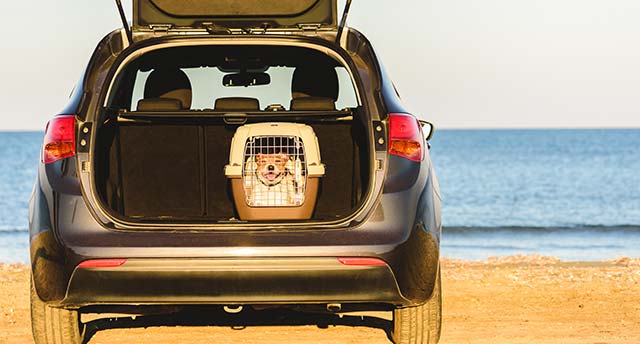
To reduce the stress, plan car trips with your pet in the crate
If you move locally, this step may not be necessary. However, when moving across the country or internationally, it might be a good idea to make your dog or cat used to the crate long before moving. For most of us, we’ve never (or very rarely) transported our pets in a crate. It is something new and smaller than their actual environment. So to reduce the stress that being locked in a crate can provoke, plan car trips with your pet in the crate. It does not have to be a long trip, a drive around the neighbourhood will work. You can keep the crate open in the room the pet usually sleeps in so that they can walk themselves in and out, making themselves comfortable with the crate. By doing so, you make your animals familiar with a new habitat which will automatically result in a less anxious moving day (for everyone).
Do Not Include Them in The Packing Process
As already mentioned before, animals are not big fans of change as it tends to generate stress. Besides, when you’re moving, it can be a little bit cluttered with all the boxes you have to get packed for your move. Your dog may want to play or cuddle but you are busy with other tasks. Pets will feel the difference and won’t understand why you are not available. The tip here is to keep your pets in a separate room they are familiar with. This will lower the anxiety. Of course, do not abandon them in the room, take breaks and go play and cuddle with them throughout the packing process.
What Do You Do With Pets on Moving day?
Keep a Friendly Climate
On moving day everyone is busy organising your own move, as well as your pets, move. Same as the packing tip, it is recommended to keep your dog or cat in a separate room. It will reduce the stress of having strangers (removal company) going in and out of your home. That being said, don’t forget to check on your pet. It is crucial to let them know you are here for them so as to not have them feel abandoned.
Make The Crate Ready: Friendly And Comfortable
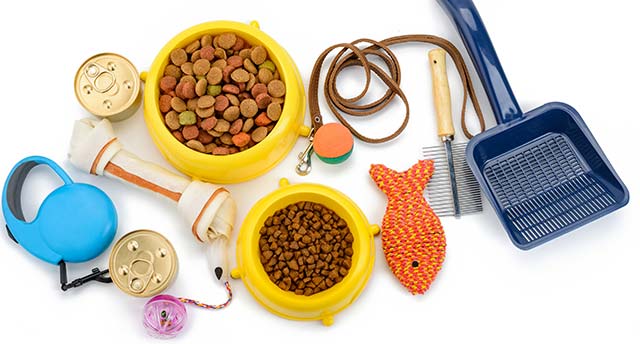
Having toys in the crate make it more friendly and comfortable
One of the keys for lowering stress when moving a dog or a cat is to prepare everything to make their relocation more enjoyable. It is pretty much preparing your own bag when you travel.
So make sure to put at the minimum the following items in your pet crate:
- Toys: to stay entertained during the relocation process,
- Blanket, rugs or other: to make the crate more comfortable, friendly and feel like home,
- Treats: the relocation can be long and it’s nice to have a little something,
- Litterbox: if you’re moving your cats,
- food and water: of course, your pet will need to drink and eat.
Certainly, tips for making the crate cosier are not limited to this list. You can add all elements you think will make your pet relocation process more comfortable. Be sure to check with airlines as to what their rules/ regulations are for pets in crates. Many will request that your pet not be fed within 8 hours of a flight as it may cause your pet to have travel sickness. Airlines will ensure your pet has plenty of water up to and during the flight.
Congratulations, You Moved to Your New Home, What Now?
Few Days After Your Move
For some animals, moving to the other side of the world and to a new environment can be a big change. You managed to reduce the stress of moving, so keep the good work in your new home. For example, make sure to keep your cat at home. Outside everything will be different and they may not recognise it yet and get lost.
Proceed in the same way if you have a dog. They can discover the garden/backyard. However, they might bark, and it is normal. It’s a new environment, with new sounds, etc. Just make sure to reassure them as much as you can.
Visit Your New Area With Your Pet
Now, it is time to visit the neighbourhood of the new home. Take your pet for a walk and visit the area. This is an easy and effective way to see how he/she will react. To be honest, it is pretty much like us when we move to a different location. We want to feel secure, comfortable but also we want to discover the new neighbourhood, etc.…well, it is the same dogs and other pets.
Keep the Routine
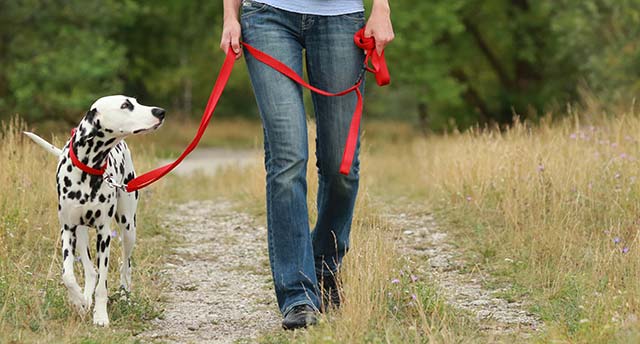
Try to keep the routine you had before your relocation
When moving with pets, try to keep the routine you had before your relocation. If you can manage to go for a walk at the same time, same for the meals, etc. there will be less risk of anxiety symptoms. In other words, keep as much as possible all the things you used to do before moving. In addition, if you can, spend a few days with your pet at your new home. This will certainly help to feel comfortable more quickly in their new house.
Update Pet Identification
Make sure not to forget to update your pet identification with an up-to-date phone number and your new address. In the case they get lost, it will make the process to find your pet much quicker. If they don’t have a collar yet, you might think of having one with your details such as your new address and phone number. This also applies for local council registration- be sure to check what your new pet registration requirements are.
Endnote
Moving with dogs and cats does not have to be stressful either for you or your pet. As much as your move, it is something that you must prepare in advance. By doing so, you make your pet more comfortable and less anxious about moving to a new home. At Palmers Relocations, we can help you in organising the move of your pet to make it as stress-free as possible for everyone. Contact our friendly team to discuss your pet move.

